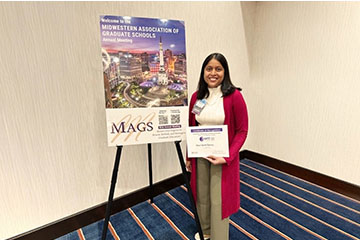Lights, camera, education
Scott L. Roberts, Ph.D., co-edits a book of lesson plans to address world history through connecting the past and Hollywood films
Scott L. Roberts, Ph.D., a professor in the Department of Teacher Education and Professional Development at CMU, co-edited a book of lesson plans for grades 6-12 which address nine eras of world history. The book, Hollywood or History? An Inquiry-Based Strategy for Using Film to Teach World History, was honored at CMU's 18th Annual Book Recognition Event. The book is part of the Hollywood or History? series for Information Age Publishing that Roberts co-edits.
Roberts notes that world history courses play a role in most K-12 classrooms and curriculum in the United States, even though U.S. history tends to dominate conversation. According to Roberts, the challenges of covering world history in the classroom are ever present. “The curricular terrain to choose from is immense and forever expanding, dealing with the development of numerous civilizations,” explains Roberts. 
With these struggles in mind, the Hollywood or History? world history volume was born. Roberts, who created the Hollywood or History? strategy when he was a classroom teacher, says the main objective is helping teachers use film effectively in “classroom utility and teacher practice.” Roberts notes that the authors who contributed lesson plans for the book, “believe[s] that students’ connection to film, along with the teachers’ ability to use film in an effective manner, will help alleviate some of the challenges of teaching world history.”
For example, one of the lessons within the book focuses on investigating the technological advancements of early humans using a clip from the film, 2001: A Space Odyssey. The opening scene of the film is known for “its portrayal of the Paleolithic Era and the advent of tool usage and human evolution.” Using the movie, as well as primary and secondary sources, students are prompted to answer the following questions:
What were some of the technologies of early human societies?
What characteristics and traits must a species display in order to be considered human?
How do historians and anthropologists learn about time periods with limited evidence and sources?
How do historical films shape our understanding of historical figures and events?
The reviews of the book series have been positive, specifically regarding classroom implication for practitioners and the opportunity the book lends for further classroom discussion. Due to the success of the strategy, there are currently five books published in the Hollywood or History? series, with several more set for release over the next few years. Roberts’ next edited book in the series will be about the effective use of cartoons in the K-12 social studies classroom. More information about the Hollywood or History? series can be found on the Information Age website.




